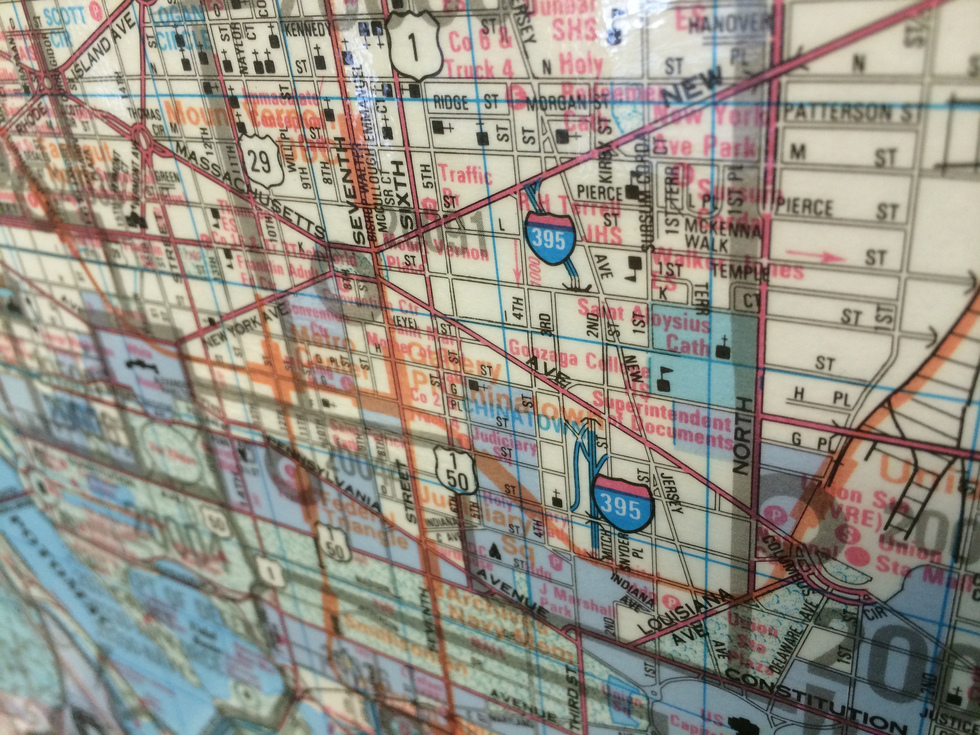Since not every guidebook can publish a touring plan that covers the specific things you may be interested in seeing, here are my rules for creating a solid itinerary no matter what your interests or destination may be.
1) Cut out the commute.
This sounds simple but the most common mistake travelers make when creating a daily plan is not using a map. Instead, they list the sights they want to see in order of preference and dash from one to the next, often crossing great distances and wasting much of their vacation in traffic or on trains.
I’d propose an alternate method: After you’ve done your initial research, divide your destination into quadrants on a map. Group your picks by distance from one to the next. Use a mapping tool that will estimate the travel time involved getting between them, and once you have that time, overestimate by 20-minutes-or-so. Remember you’ll be traveling in an unfamiliar place, which always takes longer, and you’re on holiday so you should have the option to linger if something catches your interest.
Do your initial planning that way and you’ll have time to enjoy unhurried meals and the types of serendipitous encounters that don’t happen when you’re in a rush.
2) Mix the old with the new.
Exploring a destination shouldn’t mean just seeing the sights created by previous generations. Sure, you want to go to the Eiffel Tower if you’re in Paris or the Great Wall outside Beijing—you’d be crazy not to see these iconic structures. But you’ll have a more intriguing holiday when you mix the classic sights with activities or sights that will let you get a peephole into contemporary culture, like markets that only locals patronize, artist studios that aren’t always open, neighborhoods that are off the beaten path, factory tours, and lectures or performances at a local bookstore or college.
3) Mix “high culture” with popular culture (and nature sights).
“Museum fatigue” is a common problem for travelers (a similar problem afflicts those going to cathedrals, palaces and other sites of historic import). Don’t get me wrong: seeing great cultural sites is one of the best reasons to travel. But most find that they get exhausted after three hours or more staring at works of great art. So never schedule two museums in a row, or more than three hours in any one cultural institution, unless you plan to break up that time with a meal. Instead, do, say, a museum in the morning and a hike in the afternoon.
4) Plan sufficient time for the “iconic” sites.
This may sound like it contradicts the point above, but when it comes to the sights everyone’s traveling to see, you want to give them a few hours of your time. That’s because just getting in will often involve a line, and figuring out what parts of a massive museum to see first will also take some time. So always schedule well more than an hour for any major attraction.
5) Don’t crib itineraries from tour companies.
It’s tempting, but tour companies have constraints that you, as an individual, won’t have. They often can only go to places that can accommodate a bus carrying 40 passengers. They sometimes craft itineraries to jibe with local labor laws, meaning they’ll spend much less time at an attraction than you might because, to give an example from France, the bus driver can only work 8 hours a day before he has to clock out. And, sad but true, some tours “shop steer” their passengers, meaning they rush through the Vatican or a famed museum to spend more time at a gift shop where the tour leader gets a kickback. Final reason not to copy what tour companies do: You’ll get farther off the beaten path.
6) If you want to take a day tour, pick a walking tour over the bus tours.
Overviews are overrated. Many tourists assume that they must take a day-long hop-on, hop-off bus tours to orient themselves for later. But “later” often never comes. Instead, the bus passenger sees the destination through a window or from the second floor of a double-decker, an experience akin to watching TV. Tourists who use these buses also sometimes find themselves waiting for longer than expected at bus stops. In most cities, public transportation will be more time-effective. Walking tours are different. They get you onto the streets of a destination and tend to be run by passionate experts. You’ll cover less ground, but do so in a far richer and more exciting way.
7) Follow your interests.
If you love to dance, or do crafts, or shop, find ways to do those things on the road. Don’t get caught up with what you “should” be doing. Instead incorporate your interests into your travels.
8) Schedule time to get lost.
Truly: It will be those moments when you let chance guide your feet, when you talk to strangers and stop and stare at the life all around you, that you’ll remember long after your vacation is over. I promise.






